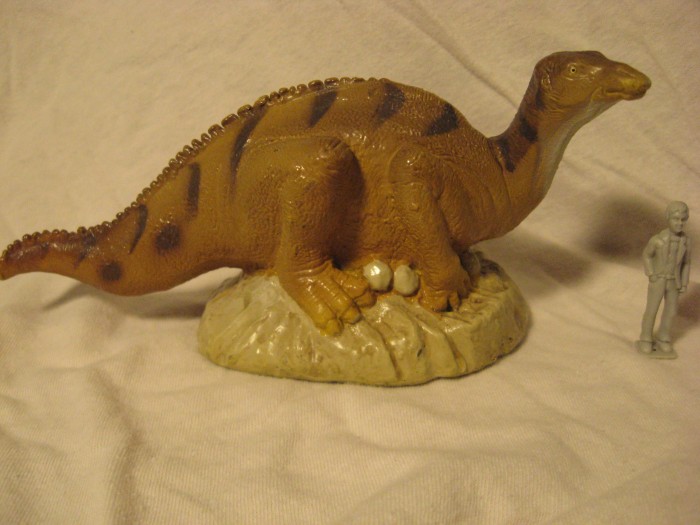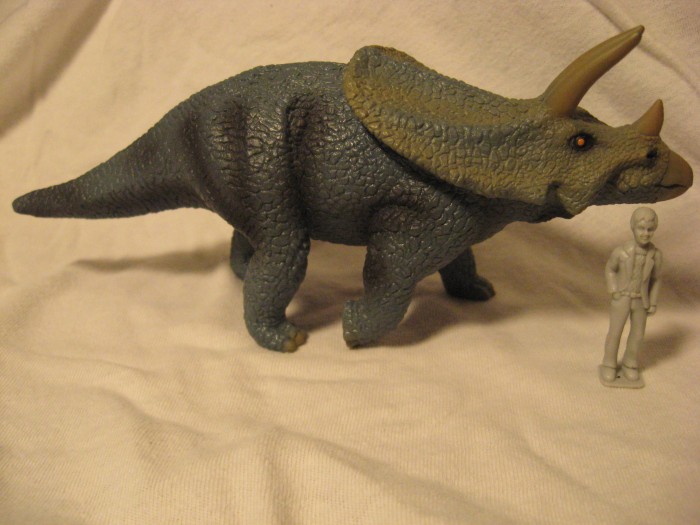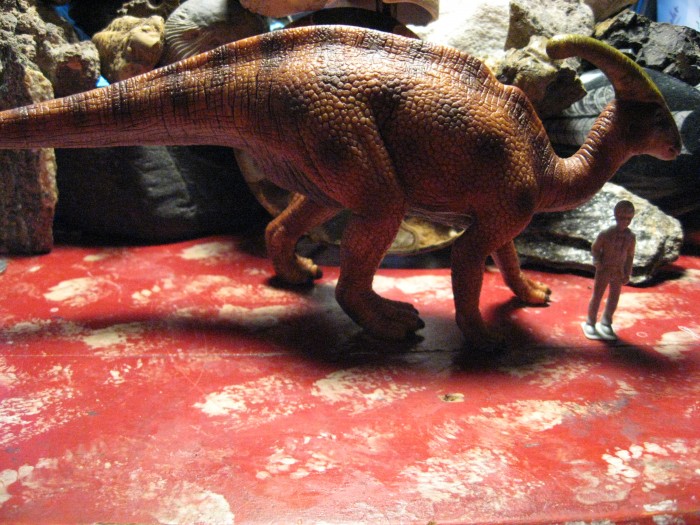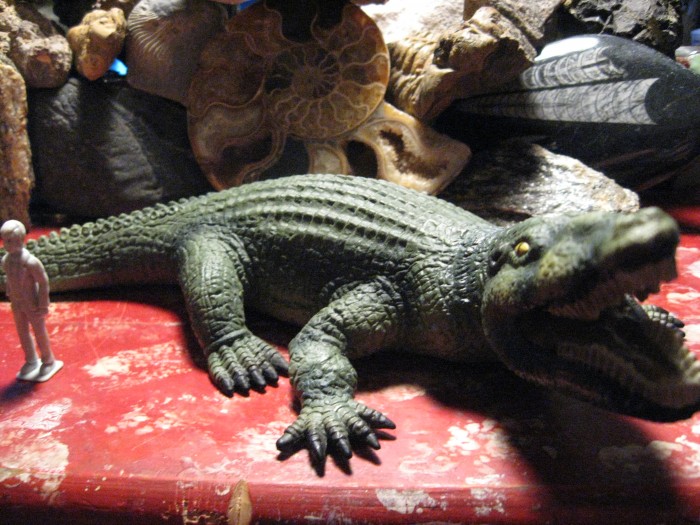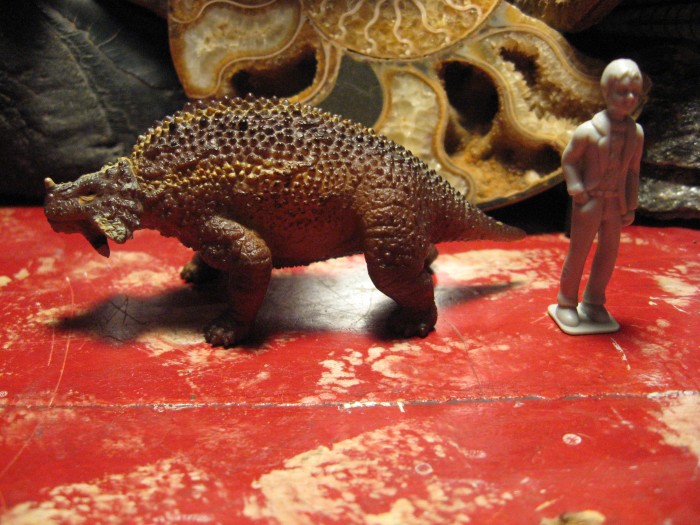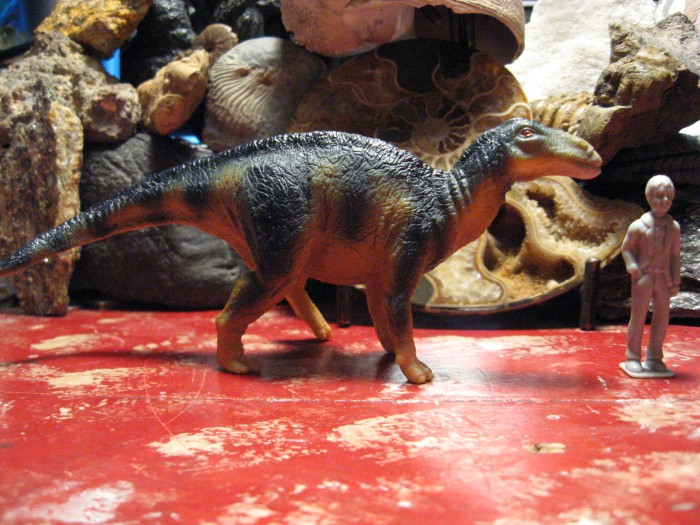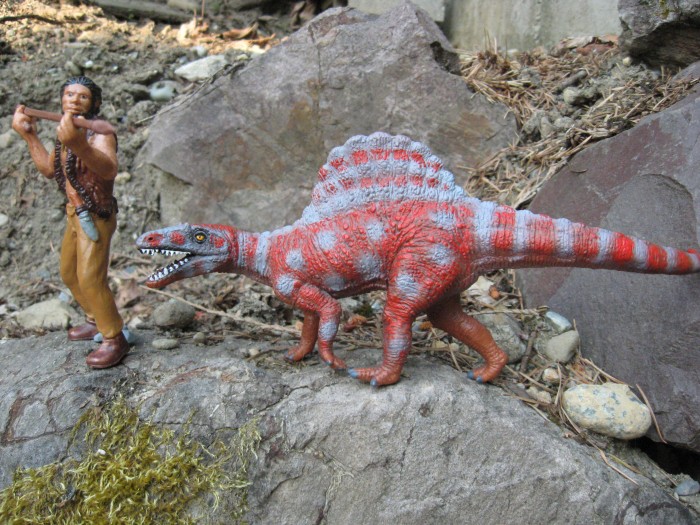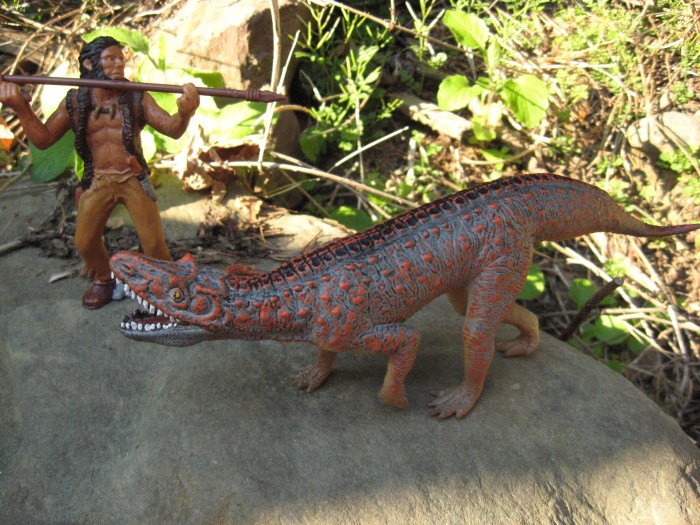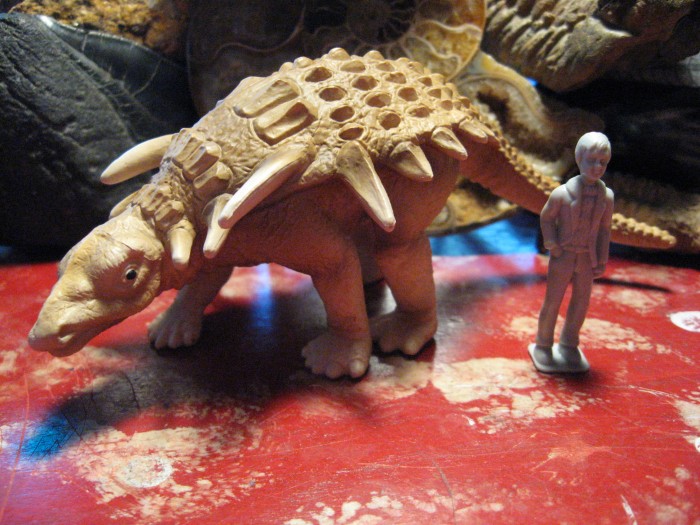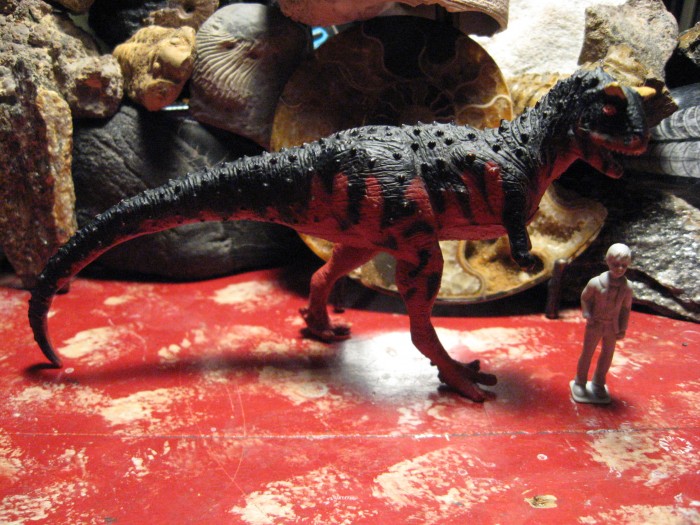Review: Ouranosaurus (Replica-Saurus by Schleich)
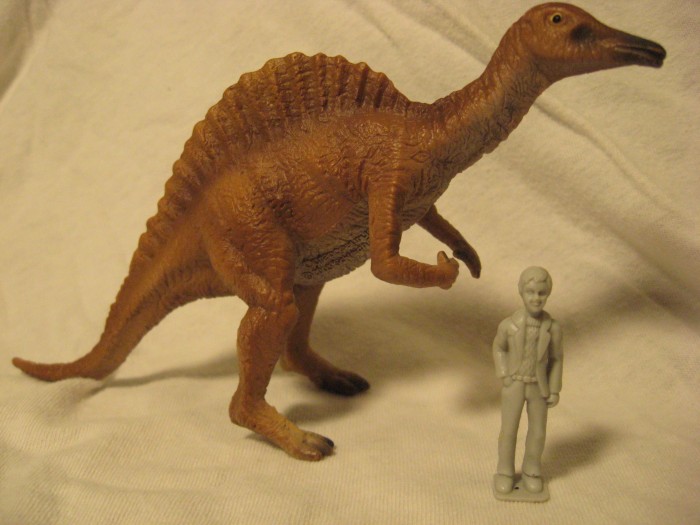
2.9 (11 votes)
The 24 foot Ouranosaurus was an interesting ornithopod from Early Cretaceous Africa, where it coexisted with the fish-eating theropod Suchomimus. Its name means “brave lizard”, and some distinguishing traits of Ouranosaurus were its thumb spikes and the elongated neural spines of its back.

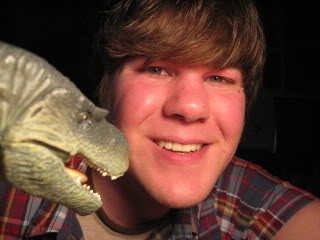 My name is Adam Frugé. I go by itstwentybelow on the forums. I have been fascinated by paleontology since I was three years old and have visited numerous fossil sites across North America, including Dinosaur Provincial Park in Alberta, Canada and Dinosaur National Monument in Utah, USA. I have displayed part of my collection in a state fair. In addition to dinosaur figures I also collect fossils. I currently live in Pullman, Washington where I am studying Anthropology at Washington State University, with special interest in human evolution and archaeology.
My name is Adam Frugé. I go by itstwentybelow on the forums. I have been fascinated by paleontology since I was three years old and have visited numerous fossil sites across North America, including Dinosaur Provincial Park in Alberta, Canada and Dinosaur National Monument in Utah, USA. I have displayed part of my collection in a state fair. In addition to dinosaur figures I also collect fossils. I currently live in Pullman, Washington where I am studying Anthropology at Washington State University, with special interest in human evolution and archaeology.


